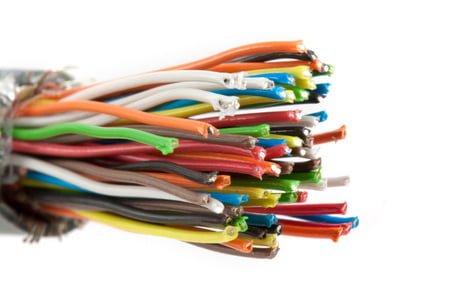Decoding Cable Colors and Their Significance
When it comes to wire and cable color codes, one common question is whether there’s an industry standard. While organizations like the Institute of Electrical and Electronics Engineers (IEEE) offer some guidance, there isn’t a universally accepted standard. Instead, private industries, especially telecommunications, lead the way in standardization efforts.

Understanding Cable Color Standards
It’s crucial to recognize that cable color standards vary widely across industries and even countries. Например, the telecommunications boom following the introduction of smartphones in 2007 led to diverse color schemes reflecting different implementation timelines.
Более того, global supply chains mean that companies source cables from various countries, each with its own color conventions. Despite guidance from IEEE, the Telecommunications Industry Association (TIA), and others, true standardization remains elusive.
Deciphering Ethernet Cable Colors
Ethernet cables, ubiquitous in computer networking, come in various colors, but no single color indicates superior performance. Instead, colors often signify specific applications. Common colors like grey, blue, yellow, orange, and white dominate, with black reserved for outdoor use.
Interpreting Ethernet Cable Colors
The meaning of Ethernet cable colors can vary based on context. Например, the Department of Defense (DoD) employs different colors to classify data confidentiality levels: yellow for top-secret, red for mid-level, and blue for unclassified data.
While there’s no universal standard dictating one color over another, certain patterns emerge:
- Gray Ethernet: Typically represents standard Ethernet connections.
- Green Ethernet: Indicates a crossover connection for linking different devices directly.
- Yellow Ethernet: Reserved for Power over Ethernet (PoE) connections, established by IEEE to deliver power through Ethernet cables.
- Blue Ethernet: Often used for terminal server connections, facilitating multiple system connections to a LAN without a modem.
- Patch Cable Color Standards
While ANSI/TIA publishes patch cable color standards, universal adoption remains elusive. Some institutions, like the University of Wisconsin Network Services Department, set color standards internally. Например:
- Серый: Standard Ethernet connections
- Зеленый: Crossover Ethernet connections
- Yellow: PoE connections
- Апельсин: Analog non-Ethernet connections
- Purple: Digital non-Ethernet connections
- Синий: Terminal server connections
- Красный: IP cameras
- Black, Pink, and White: Additional options

Navigating Cat6 Cable Colors
Cat6 cables, common in Ethernet networks, adhere to external color codes, distinct from internal twisted wire colors. While industry-wide standards are rare, typical Cat6 colors include blue for network connectivity, yellow for wired security cameras, and white or grey for interconnections.
Network Cable Color Chart
Despite varied color standards, ANSI/TIA/EIA-606-A offers comprehensive guidelines for telecommunications infrastructure. A third-party chart based on this standard provides a reference for cable color coding.
Custom Cable Assembly Solutions
At Surxin, we specialize in custom cable manufacturing tailored to client specifications. With extensive experience and cutting-edge capabilities, we design color schemes for seamless integration into existing systems. Contact us today to discuss your project requirements.
By reorganizing and condensing the information, this guide provides a comprehensive overview of cable colors and their significance across various applications.
